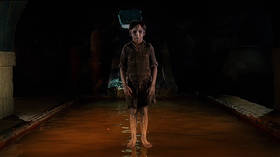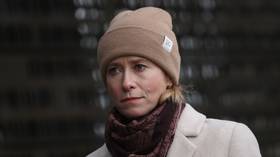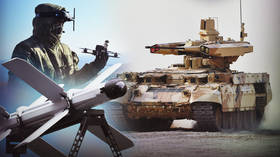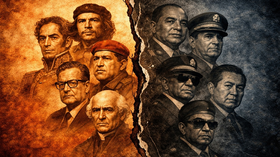Watching through your hands: The scariest horror movies of all time, as seen by science

A new study that had people watch horror movies while their brains were being imaged has revealed what makes some horror movies so frightening – and has attempted to rank the scariest ever made.
Any list of best movies is sure to be controversial – just ask the people who run the Oscars. But this one is brought to you by science – based on a study by a team of neuroscientists at the University of Turku in Finland, published this month in the scientific journal NeuroImage.
First, they used Rotten Tomatoes, AllMovie and IMDb to come to a list of 100. They then had hundreds of volunteers, many of them horror movie fans, complete a survey asking them to rate the 100 movies on a scale of 1 to 10 for scariness and quality. (Incidentally, if you would like to take part in the survey, it is still active: Part 1 is here and Part 2 here.)
Without further ado, let’s take a look at the movies.
The Conjuring (2013) © Warner Bros. Pictures
The scariest movies, brought to you by science
The authors used a pretty broad definition of horror (Jaws and King Kong are on it) and the list only included movies up to the end of 2016. So what made the list? You can download the full one online, but the top 10, scientifically proven, scariest movies ever are:
The Devil’s Backbone (2001)
The Wailing (2016)
The Conjuring (2013)
REC 2 (2009)
Insidious (2010)
The Exorcist (1973)
Goodnight Mommy (2015)
A Chinese Ghost Story (1987)
The Conjuring 2 (2016)
Under The Shadow (2016)
There seems to be a bit of recency bias here, but there was only a slight correlation between scariness and year of release, and in any case, perhaps modern horror movies really are a bit scarier than older ones – after all, people had tamer attitudes back in the day and were probably less desensitised to on-screen violence.
But there were plenty of classics there too for the old school fans: Psycho (1960), Rosemary's Baby (1968), and The Texas Chainsaw Massacre (1974), among others. The oldest film on the list was Nosferatu The Vampire (1922), and the movie that the largest proportion of people had seen was The Shining (1980).
Note that this top 10 was not ordered by quality, only by scariness – but as it happens, the top two movies were the same anyway, with The Devil’s Backbone scoring a perfect 10 for quality. That said, only 4.2 percent of people had seen it, which may have biased the score. Is it really that good?
Under The Shadow (2016) © XYZ Films, Vertical Entertainment
Brain waves: suspense vs. jump scares
But the survey was only part of this study, mainly a way of selecting the films. The researchers went all out on this study, and had 40 volunteers watch horror movies while hooked up to an MRI to scan their brain activity. They watched trimmed-down versions of The Conjuring 2 and Insidious, selected for their high place in the table, but also because they contained over 20 jump scares (or ‘acute threatening events’) apiece.
What they found rings true for any horror movie fan. Essentially, there are separate brain pathways for two main types of movie-induced fear: ‘sustained fear’, or a slow burning increase in tension, and ‘acute fear’, which is a fright or a jump scare.
During tension-building scenes, for instance when the soundtrack goes quiet and the protagonist is investigating a sinister place, our visual and auditory centres fire up so as to strain for any faint movement or sound in the darkness. Upon a jump scare, however, the threat evaluation and decision-making centres in the brain light up, similar to the ‘fight-or-flight’ response.
The Conjuring 2 (2016) © Warner Bros. Pictures
Trick of the mind
It is clear that horror movies recreate the feeling of genuine danger in the viewer; the visual and auditory cues are enough to convince our brains that we are in a perilous situation. Since fear has evolved for a perfectly good reason (as a way of “coordinating survival responses during life-threatening encounters,” in the words of the authors) our bodies react as if we were inside the movie; hence the real fear that is only alleviated once the lights go up.
Also on rt.com Satanic ‘666’ graffiti sprayed on dozens of graves in Danish cemetery (PHOTOS)Our brains know which cues mean what, and prepare for the inevitable threat before it arrives—be it in the form of a jump scare or otherwise. Think about that moment of pure tension as you await something awful finally making itself known – your muscles tense up, you crouch into a ball, you’re sweating. All of these things are practical responses to an actual physical threat – although covering your eyes would probably not help. From these predictable human responses come the tropes of horror movies – good directors know exactly when to ratchet up the tension and when to lighten the mood with a joke. Occasionally, some may choose to break convention in more experimental films.
So there you have it. Now that you know how the magic trick is done, there is nothing to be afraid of anymore, right?
Goodnight Mommy (2015) © RADIUS-TWC Dimension Films












